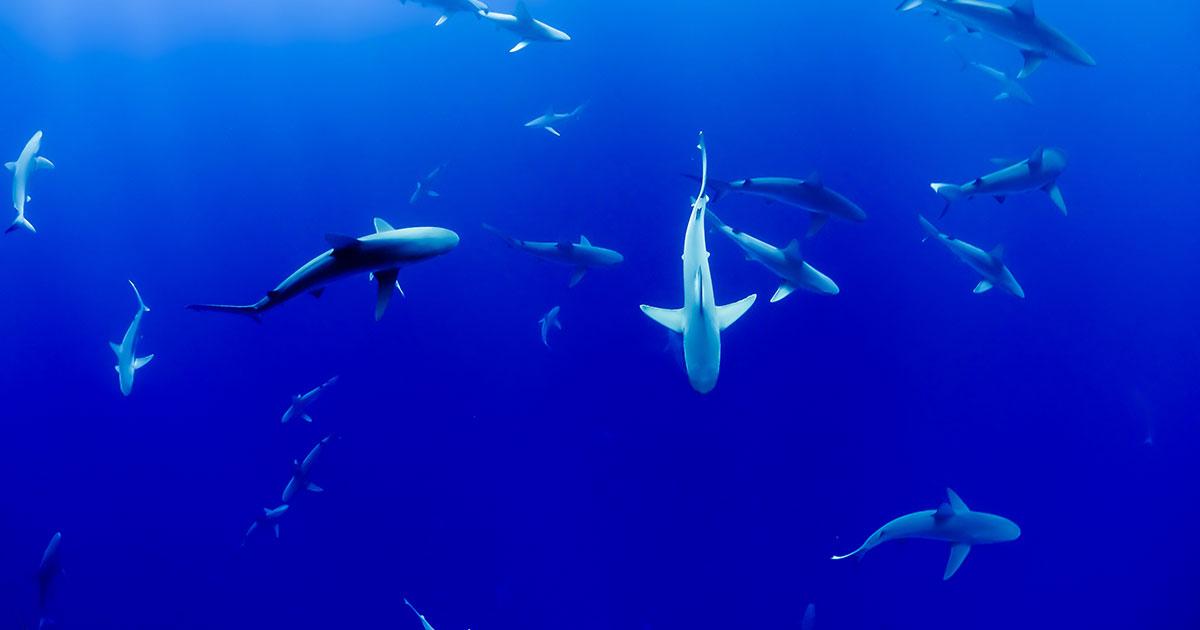Shark Overfishing Reflected in Updated IUCN Red List
The Shark Specialist Group (SSG) of the International Union for the Conservation of Nature (IUCN) recently released updated Red List Assessments for 58 species of sharks and rays, 17 of which were classified as threatened with extinction. The results are part of a global project to assess population trends based on a series of expert workshops, the first of which focused on Australian species as well as oceanic species found worldwide.
“Our results are alarming and yet not surprising, as we find the sharks that are especially slow-growing, sought-after, and unprotected from overfishing tend to be the most threatened,” said Professor Nicholas Dulvy, SSG Co-chair based at Simon Fraser University. “Of particular concern is the fast and iconic Shortfin Mako Shark, which we’ve assessed as Endangered based on serious depletion around the globe, including a 60% decline in the Atlantic over about 75 years.”
The closely related Longfin Mako Shark was also listed as Endangered. Makos migrate great distances, don’t reproduce until their late teens, and are valued in many countries for both meat and fins; however, they are not subject to any international fishing quotas. The importance of fisheries management was reflected in the 41 updated Red List Assessments for the sharks and rays of Australia, a world leader in shark conservation.
“More than half of the Australian species assessed were classified as Least Concern, thanks in large part to the implementation of fishing limits,” said Dr. Peter Kyne of Charles Darwin University, who serves as the SSG Red List Authority Coordinator. “The nine Australian sharks that remain at serious risk are mostly deep-water species that are exceptionally slow-growing and thereby ill-equipped to withstand even modest fishing pressure. In particular, the Greeneye Spurdog, whose nearly three-year pregnancies are the longest in the animal kingdom, was assessed as Endangered.”
The oceanic sharks and rays found to have relatively healthy populations (classified as Least Concern) were mainly species that are not valued for food, such as the Pelagic Stingray, and/or found at extremely deep depths beyond the reach of fishing gear, such as the Megamouth Shark.
“The threats to sharks and rays continue to mount and yet countries around the world are still falling far short of their conservation commitments, particularly with respect to basic limits on catch,” says Sonja Fordham, SSG Deputy Chair based at Shark Advocates International, a project of The Ocean Foundation. “To turn the tide and allow shark and ray recovery, the SSG is calling for immediate national and international fishing limits, including complete bans on landing those species assessed as Endangered or Critically Endangered. The need for action is urgent.”
The new Red List Assessments for Australian and oceanic sharks can be found here.
Story by the Shark Specialist Group (SSG) of the International Union for the Conservation of Nature (IUCN)





